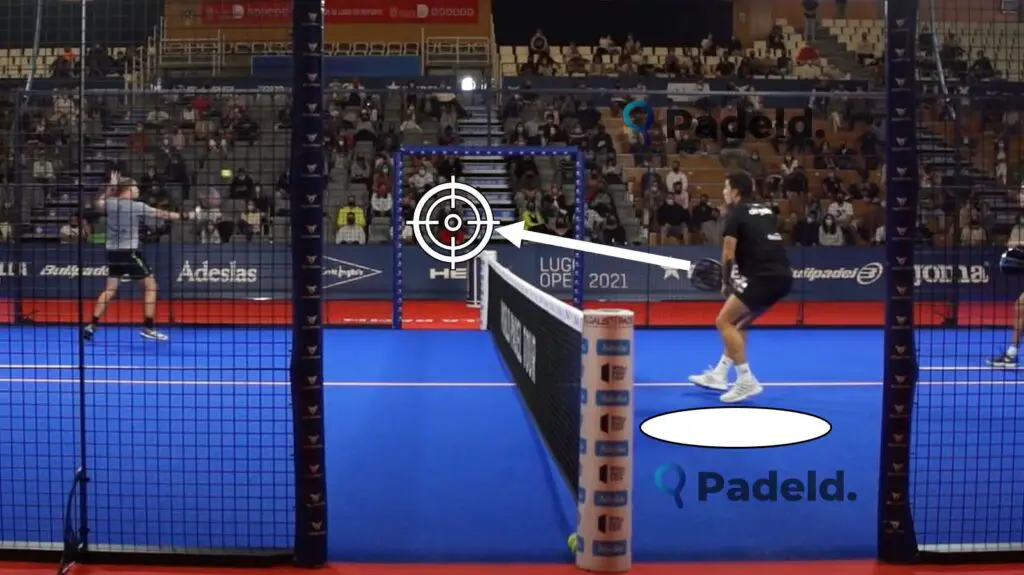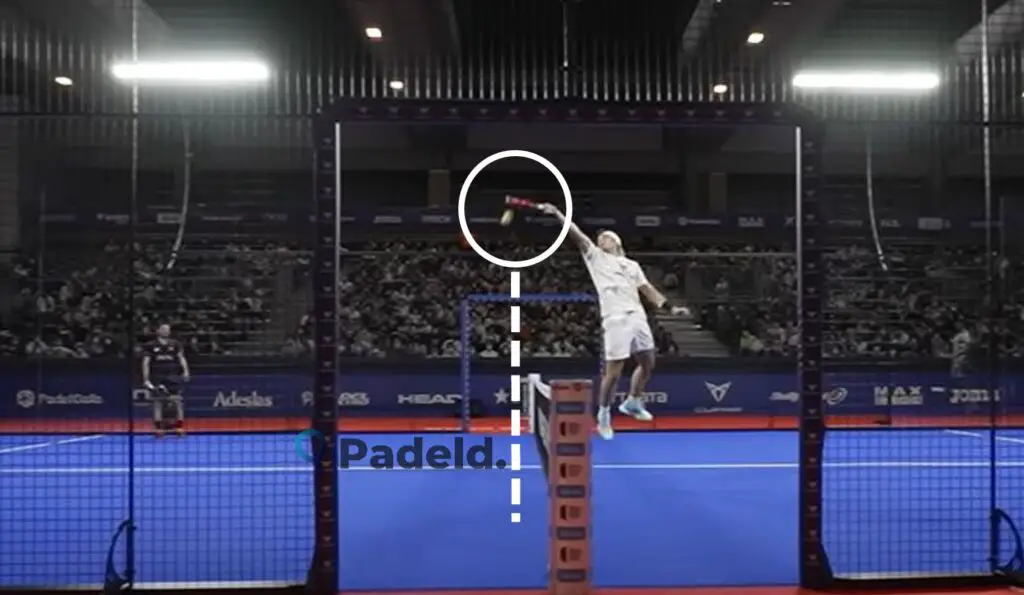When playing racket sports like tennis and padel, one of the main ways to dominate a rally is by moving your way up the court and getting yourself in a position close to the net. By doing this, you will force your opponent backwards, make it hard for them to hit passing shots against you, and put yourself in a great position to hit quick, aggressive, point-winning shots into your opponent’s side of the court.
When you move up close to the net, one of the tactics your opponent may use is to try to hit the ball towards you very forcefully. This means that you will have to react very quickly in order to play your shot in time! Players who aren’t familiar with playing close to the net usually have a few questions about what they’re allowed to do in this position. One of the questions they’ll often ask is ‘what happens if I touch the net?’ – and you can read all about that by clicking here! One of the other questions is ‘Can I reach over the net to hit the ball?’ – and that is the question I’m going to be covering in this post today!
So, can you reach over the net to hit the ball in padel?
Yes, in certain scenarios. If your opponent has just hit the ball and it hasn’t yet bounced on the ground on your side of the court, you cannot reach over the net with your racket to hit it. If the ball has already bounced on your side of the court, you are permitted to reach over the net with your racket to hit it.
I appreciate that the explanation above may be a little hard to understand without giving some further context, so below we will explore some examples of where this kind of thing may happen during a padel match! This should make the whole rule much clearer! Here goes…
Firstly, imagine that you’re standing very close to the net in a position like the one in the diagram below. The ball is on your opponent’s side of the court, and you are waiting for them to hit it. Your opponent strikes the ball, and it loops slowly through the air towards you. You see the opportunity to win the point and lunge forwards over the net with your racket before smashing the ball into the ground. This is an illegal shot in padel because you have reached over the net to return your opponent’s shot before it has bounced on the ground on your side of the court. In this situation, the rally will end and the point will be awarded to your opponents. If you had allowed the ball to travel past the net and played a volley from your side of the court instead, this would have been a legal shot and the rally would have continued.

Now imagine a slightly different scenario. Your opponent has just played a smash shot into the ground on your side of the court. The ball bounces up and hits your back wall before bouncing back towards the net. In this situation, the bounce of the ball would resemble the diagram below!

As the ball travels towards the net, you notice that it has dropped low enough for you to reach it. You run forwards, watching the ball as it drops, and wait until the last possible moment before playing a quick shot of your own into the ground. At the moment you made contact with the ball, it had actually passed back over the net onto your opponent’s side of the court, meaning that you reached over the net in order to hit it. This would probably look something like the image below! Reaching over the net to hit the ball in this situation is legal in padel because you allowed the ball to bounce on your side of the court first.

For the next scenario, imagine that you’re stood a few metres away from the net. The ball is travelling towards your opponent, who takes this opportunity to play a dropshot that lands close to the net on your side of the court. The shot is played with plenty of backspin, and because of the amount of backspin that was applied, the ball immediately spins backwards once it hits the ground. This causes it to begin to travel back over the net onto their side of the court. When you notice the ball looping back over the net, you rush forwards towards it and hit it quickly into the ground. Similarly to the previous example, when you made contact with the ball, it had actually passed back over the net onto your opponent’s side of the court, meaning that you reached over the net in order to hit it. Once again, hitting the ball like this in this situation would be legal because you allowed the ball to bounce on your side of the court first.
What If There Are Disagreements Over Whether The Ball Was Hit Over The Net Illegally?
Professional padel matches have umpires that will make decisions as to whether a ball was hit illegally or whether a ball was in or out. But that begs the question, what happens in amateur matches when there are no umpires or referees present? Let’s say one team accuses the other of illegally hitting the ball over the net, who makes the final decision on whether that accusation is right or wrong?
Well, there’s no easy way to settle disputes like this! Especially during a highly competitive game where tensions are running high. The only thing you can do during amateur games is make sure you own up to your mistakes and admit it if you feel as though you’ve hit the ball illegally. If both teams can’t come to an agreement, you should play a let and repeat the point.
What If A Different Part Of Your Body Is Over The Net As You Hit The Ball?
Now you know the circumstances in which reaching over the net to hit the ball is illegal, it’s probably worth examining what happens if a different part of your body is over the net, but not the ball. What do I mean by this? Let’s go through a quick example…
Imagine you’re standing next to the net and an opposition player has just hit the ball towards you. You know that if you lunge forwards and hit the ball before it passes the net, this will count as an illegal shot and lose you the point. But what if you hit the ball with the racket in your right hand, whilst your left arm is over the net? This would count as a legal shot, because the part of your body which hit the ball was on your side of the net! Basically, in this scenario where you’re playing a volley, you can reach over the net with whatever part of your body you want, as long as the contact with your racket takes place on the correct side of the net.
If you hit a legal volley with the racket in your right hand, and then during the follow through your right hand ends up going over the net, this still counts as a legal shot because when the contact between ball and racket occurred, it occurred on your side of the net.
Can You Touch The Net During A Game Of Padel?
The answer to this is no. If you, your racket, any of your equipment, or any clothing that you are wearing touches the net or the net posts at any time during the course of a point, your team will automatically lose that point. This is the case even if the contact was accidental! As I mentioned earlier, if you’d like to read more about this and find out why this rule exists – I’d recommend checking out the post I wrote on it by clicking here!

Conclusion
I hope this post has helped clear up any confusion you may have had about reaching over the net in order to hit the ball in padel! In summary, it’s allowed, but only in very specific circumstances after the ball has bounced on your side of the court first. The opportunity to execute a shot like this only really presents itself after your opponent has played either the smash or a dropshot.
If there are any other padel rules you have questions about, feel free to have a browse of the other posts on the site as you may find that I’ve already answered some of them there! Enjoy your stay!
